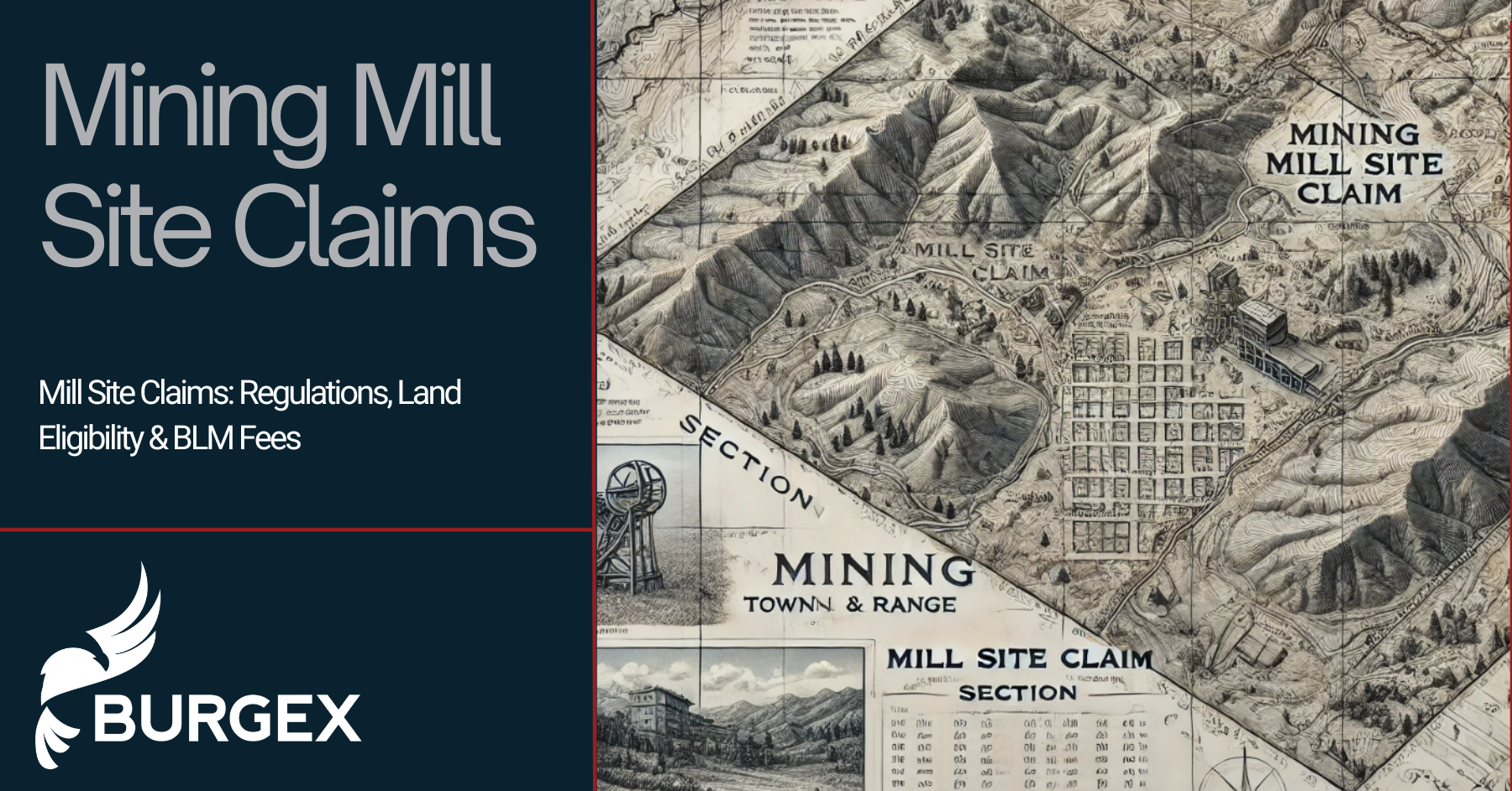Under 43 CFR 3832.31 a mill site is a location of nonmineral land, not contiguous to a vein or lode, that can be used for activities reasonably incident to mineral development on, or production from, the unpatented or patented lode or placer claim with which it is associated.
Mill sites may be located on unappropriated public land that is “open to mineral entry” under the Mining Laws. Lands where the United States owns the surface, but not the mineral rights would not be open to mill site location. Likewise, on land which the United States owns the minerals but not the surface, such as Stock Raising Homestead Act lands, would not be open to millsite location.
Each individual mill site is limited to five acres. Mills sites must be located on land that is not mineral-in-character. The locator must use or occupy each two and a half acre portion of a mill site in order for that portion of the mill site to be valid.
You may locate a mill site in the same manner as a lode or placer mining claim. Mill site claims may be located by legal subdivision on surveyed lands or by metes and bounds on unsurveyed lands. Like placer and lode claims, each mill site should be located (monumented, posted, recorded, etc.) as required by state law. Under Section 3910 of the California Mining Code:
The proprietor of a vein or lode claim or mine, the proprietor of a placer claim, or the owner of a quartz mill or reduction works, or any person qualified by the laws of the United States may locate not more than five acres of nonmineral land as a millsite.
The location shall be made and the claim boundaries marked in the same manner as required by Section 3902 for locating placer claims, except that the monument in or on which the notice of location is posted may be erected anywhere within the claim, and location work is not required.
There is no limitation on how many mills sites can be located provided that each mill site is “properly occupied” for “mining or milling purposes.”
A few guidelines:
- Mineral in Character: There is no definition of “mineral in character” in the statutes. Perhaps the most definitive and enduring test was articulated by the U.S. Supreme Court in Diamond Coal & Coke Company v. U. S. in 1914. There mineral in character was described as “mineral deposits having such quality and quantity as would render their extraction profitable and justify expenditures to that end.”
- Properly Occupied: The Department of Interior has recognized the sinking of wells and the construction of improvements for conveyance and utilization of water to be used for mining operations as satisfying the requirement for proper occupation of the mill site for mining or milling purposes. The location of a mill site does not, in and of itself, create a water right. This is a matter of state law.
- Fees: The BLM issued a final rule to make adjustments to its location and maintenance fees for unpatented mining claims, mill sites, and tunnel sites. The rule became effective on July 1, 2024. The new location fee for claims or sites located on or after September 1, 2024, is $49. The new maintenance fee is $200 per lode claim, mill site, or tunnel site. The new fees are in effect for the 2025 assessment year, which starts September 1, 2024.

